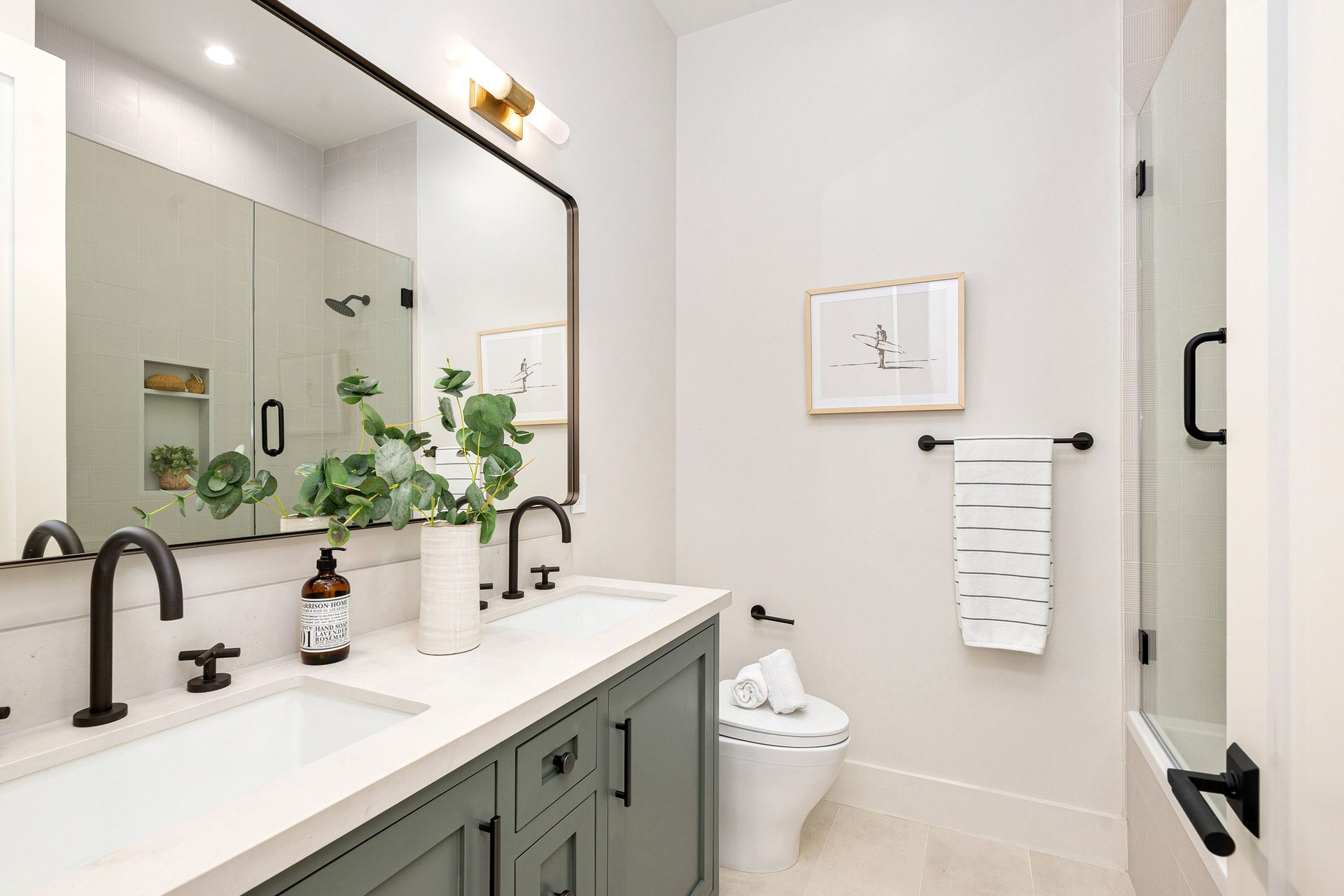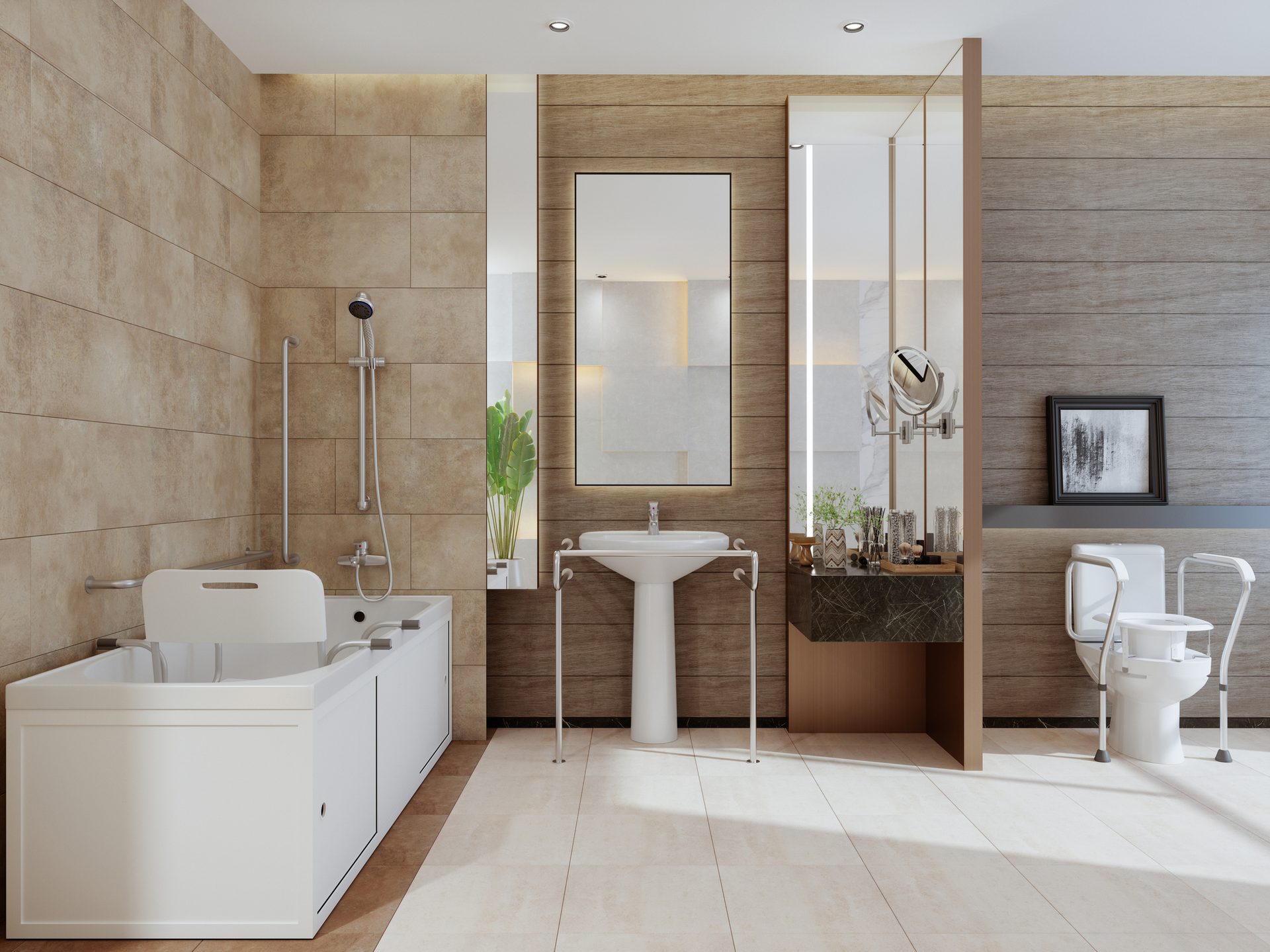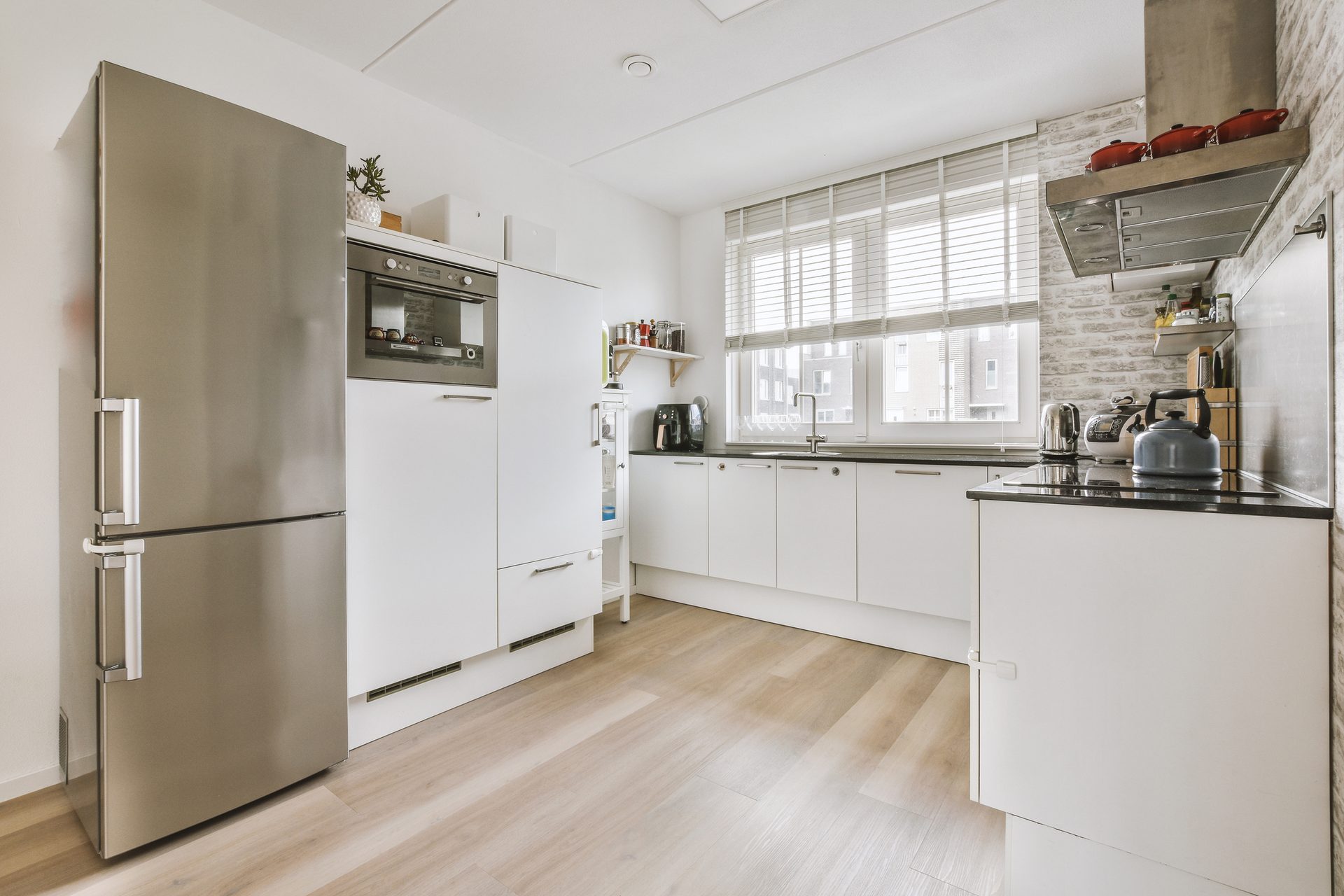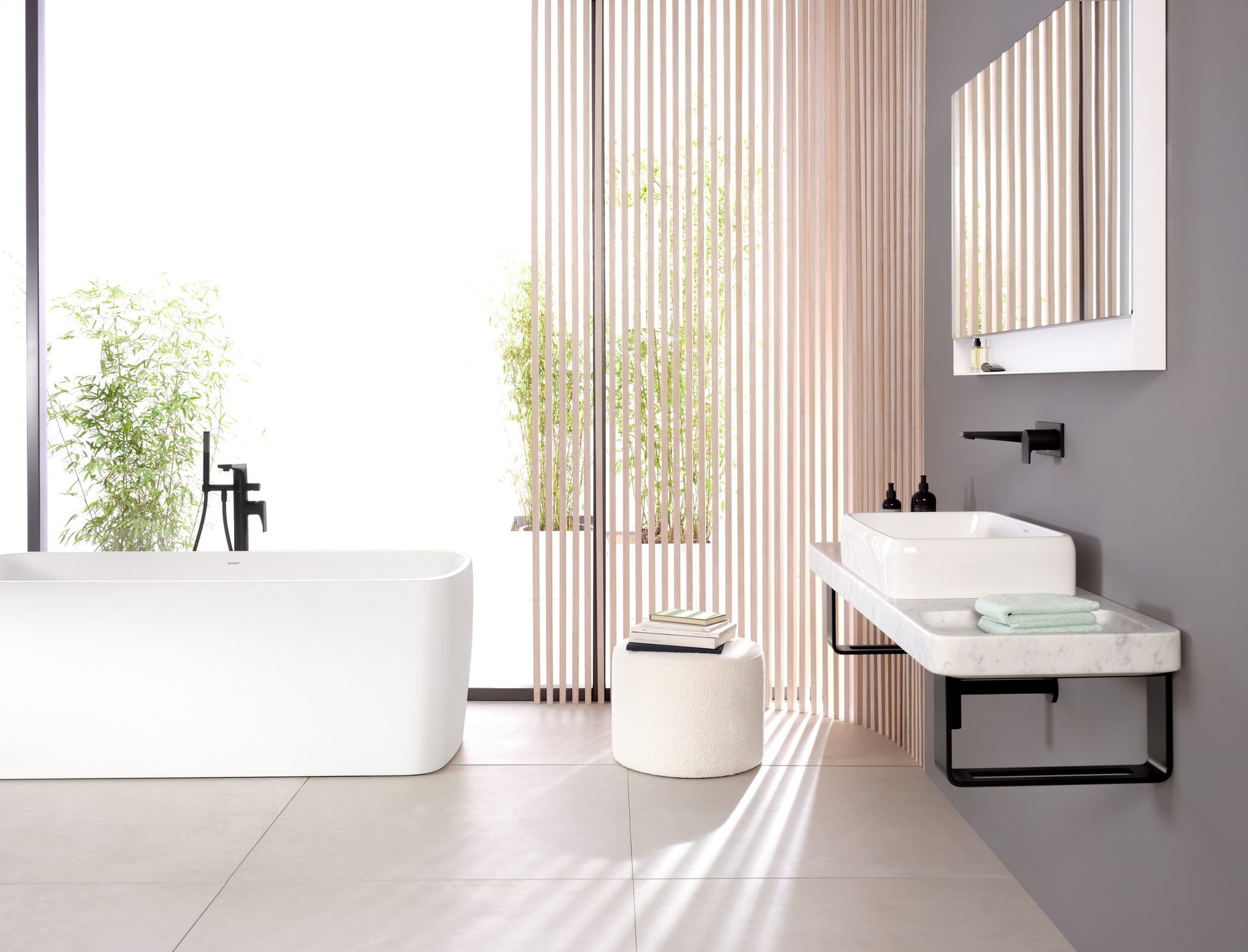Residential bath and kitchen outlook 2025
Renovation over relocation defines 2025 housing decisions.
By Kristen Bayles

“Consumers’ wants are shifting one way in particular: they’re leaning towards mid to high-end renovations as opposed to new builds.” Wirestock / iStock / Getty Images Plus / Via Getty Images
While the pace of new home construction continues to soften across much of the U.S., the residential bath and kitchen market is far from stagnant. Homeowners are reinvesting in existing spaces, driving strong demand for luxury upgrades, smart plumbing innovations and accessible design features. With economic headwinds slowing new home starts, the bath and kitchen industry is seeing momentum shift toward remodels and additions; often to accommodate aging-in-place or multigenerational living.
After a period of pandemic-driven home improvement booms and inflation-fueled slowdowns, the residential bath and kitchen market in 2025 is finding its footing in a new reality: one defined by renovation over relocation. As high interest rates and housing affordability challenges temper new home construction, homeowners are choosing to upgrade existing spaces, focusing on functionality, longevity and modern comfort. From water-saving technologies to spa-inspired bathroom retreats, the latest trends reflect a blend of practicality and indulgence.
Thriving and slowing sectors
Consumers’ wants are shifting one way in particular: they’re leaning towards mid to high-end renovations as opposed to new builds. According to VP Marketing at Niagra, Jenni Steele, “Kitchen and bathroom remodels are the two most common home renovation projects. These rooms are frequently renovated due to their high usage and significant impact on a home's resale value.”
As inflation pressures persist and housing costs remain high, homeowners are reevaluating where—and how—they spend. The result? A national pivot from new builds to strategic renovations, especially in kitchens and baths.
As of 2025, mortgage interest rates remain significantly higher than during the pandemic-era lows. For many homeowners who benefitted from historically low rates, trading up to a new home means not only paying more for a property, but also facing a much steeper monthly mortgage. Not to mention, available housing inventory remains tight – particularly in desirable areas – making it harder to find a better home in one’s price range. So, consumers are staying where they are, but making upgrades to their existing homes to better suit their taste.

“With economic headwinds slowing new home starts, the bath and kitchen industry is seeing momentum shift toward remodels and additions; often to accommodate aging-in-place or multigenerational living.” onurdongel / E+ / Via Getty Images
Popular upgrades to existing bathrooms are likely to vary from spa-like enhancements to ageing-in-place accommodations. “With the cost of living and the housing market being so high, I see a lot of homeowners adding an addition to their home or remodeling to create an in-law situation. I can’t count how many customers I have helped who are taking out tubs to put in a walk-in shower to accommodate an aging parent.” Accommodations for the aging population are becoming increasingly popular, according to Vice President of Sales at Gerber Plumbing Fixtures, Derek Kirkpatrick. Products like touchless faucets and grab-bars have grown in popularity to ensure comfort and safety for elderly home-owners.
Similarly, many families are choosing to upgrade their bathrooms to suit family members of all ages – from toddlers to the elderly. More and more consumers are asking for, in the words of Jean-Jacques L’Henaff, Leader, LIXIL Global Design, LIXIL Americas, “Solutions that serve multigenerational households and must adapt to serve a wider range of needs—across ages, abilities, and routines.” He continues, “Builders that prioritize products that integrate comfort, safety and ease of use such as touchless faucets, accessible showers and intuitive controls, help create spaces that work for all ages from young children to older grandparents. With the number of people living in multigenerational homes growing steadily over the past 50 years, and more than one in four Americans now living in such households, the demand for inclusive, adaptable home products has never been greater. ”
New-builds are not seeing the same success as renovations, however. While some markets continue to see modest growth in new builds, national housing starts have slowed overall. Builders are proceeding cautiously amid economic uncertainty, focusing more on high-margin projects as affordability challenges squeeze the entry-level segment.
Rising interest rates, persistent inflation, and material cost volatility have made new home construction less feasible for many buyers; particularly at the entry level. As a result, more homeowners are choosing to renovate existing spaces rather than relocate, a shift that’s reshaping demand in the residential bath and kitchen sector. Derek Kirkpatrick notes that “entry-level new construction [has been] hit hardest by elevated interest rates and affordability challenges.”
This trend is echoed by Jenni Steele, vice president of marketing at Niagara, who adds that “new home construction growth has moderated in some regions due to labor shortages and rising material costs.” In place of new builds, homeowners are focusing on “affordable, high-performance, water-efficient and sustainable bath fixtures” that improve their existing homes while helping manage long-term costs.
“The residential bath and kitchen sector heads into 2025 with steady consumer interest—but also a growing sense of economic caution. High interest rates and persistent inflation are pushing many homeowners to delay discretionary renovations or scale back project scopes. Instead of high-end upgrades, value-focused improvements are taking precedence.”

While fewer homes are being built from the ground up, the market remains active: just in different ways. Homeowners are staying put, but they’re investing in smart, stylish, and accessible upgrades that make their homes more livable for the long haul.
What’s trending?
We know that remodels and renovations are popular, but what products are seeing the most traction in the residential market? According to Senior Sales Associate of Sink & Spout Meredith Mazerolle, smart technology. “Smart toilets have a sleek design with minimal cords (as opposed to their washlet seat cousin). These toilets have all the bells and whistles in healthier price point ranges than ever before for all homeowners to consider.”
The newfound affordability and ease-of-use of smart tech has made it a popular choice for homeowners looking to update their space – and save money. Not only are these advanced products cheaper now than ever before, their smart features allow homeowners to identify problems quickly and efficiently, enabling them to fix them before disaster strikes. In the same vein, water-saving fixtures continue to be in demand for homeowners. Darlene Brown, senior sales associate at Sink & Spout Lebanon, notes the popularity of digital shower valves. “Some want a simple on-off solution, others want to control the shower from their phone.”
Consumers also want products that are easy to install and maintain, likely due to the labor shortage. While smart products often fit the bill, Mazerolle notes that she often has customers tell her everyday “how tired they are of cleaning their fixtures that have nooks and crannies.” Simple, modern fixtures are becoming increasingly popular because of this. Designs with sleek lines and subtle textures are in high demand. “Modern but approachable aesthetics,” are incredibly popular, according to Kirkpatrick.
We’re also seeing trends in colors and designs emerging. Across the board, warm-toned metals – particularly brushed gold – continue to rise in popularity, with several of our sources citing increased demand. “Finishes are evolving in step with the self-care narrative,” notes Jean-Jacques L’Hénaff. “Warm golds are on the rise, like our Warm Sunset finish, bringing a sense of comfort and calm.” Meredith Mazerolle at Sink & Spout adds that customers are “obsessed with a serene space with light wood tone vanities with brushed gold fixtures.”

“Modern but approachable aesthetics are gaining more and more traction.” ProCreators / iStock / Getty Images Plus / Via Getty Images
Mixed metals also remain in demand, especially combinations like matte black with brass or polished chrome. “Mixed metals are a top trend,” says Gerber's Derek Kirkpatrick, pointing to a blend of brushed brass and black as a standout design statement. Interestingly, people are still interested in matte black, there are signs the trend is shifting toward softer, more approachable versions. L’Hénaff notes a growing preference for hard graphite, “a more approachable take on the dark finish trend.” Sink & Spout’s Darlene Brown also points to Brizo’s Black Onyx and Kohler’s Vibrant Brushed Graphite as finishes gaining traction.
Challenges in the industry
The residential bath and kitchen sector heads into 2025 with steady consumer interest—but also a growing sense of economic caution. High interest rates and persistent inflation are pushing many homeowners to delay discretionary renovations or scale back project scopes. Instead of high-end upgrades, value-focused improvements are taking precedence. Darlene Brown notes that the middle class will likely be hit the hardest – they’re the most likely to hold off on needed renovations in times of uncertainty.
"Homeowners will prioritize value, function, and ROI in product selection,” says Derek Kirkpatrick, vice president of sales-wholesale at Gerber Plumbing Fixtures. “The ones who have planned for a renovation will continue forward. The customers who are thinking about it are putting it off a bit to ‘see what happens.’”
As a result, mid-tier products that offer quality without premium price tags are gaining favor. Industry professionals are also seeing increased demand for necessity-driven renovations—such as plumbing system replacements or accessibility upgrades—as these projects are harder to postpone. Sink & Spout’s Meredith Mazerolle notes that they are focusing on keeping their products for emergencies and quick renovations in stock.
Global sourcing instability also continues to challenge the industry as tariff-related price fluctuations make planning difficult. “Tariffs are creating pricing volatility, especially for products sourced from Asia,” Kirkpatrick notes. Manufacturers are contending with rising container costs and unpredictable import duties. To manage these disruptions, companies like Gerber are diversifying their sourcing strategies and providing clear communication with distributors and customers. "Our company honors quotes for 30 days, whether there’s a price increase or not,” adds Meredith Mazerolle of Sink & Spout, highlighting the importance of reliability in uncertain times.
Beyond tariffs, labor shortages and rising material costs are also slowing new construction, particularly at the entry level. That’s shifting momentum toward renovation work, where homeowners can upgrade existing spaces rather than take on the high costs of buying or building a new home. The middle-class is likely to be hit the hardest by these headwinds. The NKBA notes that they’re eager to see if the “missing middle” will jump back into renovations after two years of primarily being on the sidelines.
Overall, while homeowners may be more cautious in their spending, they’re still investing in upgrades that offer long-term value, comfort and sustainability. Renovation, not relocation, is increasingly the path forward; consumers are gravitating toward accessible design, smart water-saving technology and modern yet low-maintenance finishes to make their existing house feel more like their dream home.
Heading into 2025, the industry is poised to meet evolving homeowner priorities with adaptable products, thoughtful design and a continued focus on performance and ROI. While challenges remain, manufacturers, showrooms and trade professionals alike are demonstrating their ability to navigate change and meet demand with both creativity and resilience.
The path forward in 2025 isn’t about building more—it’s about building smarter. Homeowners are renovating with purpose, and the bath and kitchen sector is rising to meet them with thoughtful design, lasting performance, and sustainable innovation. Because even in a challenging economy, the demand for better homes never slows down.

